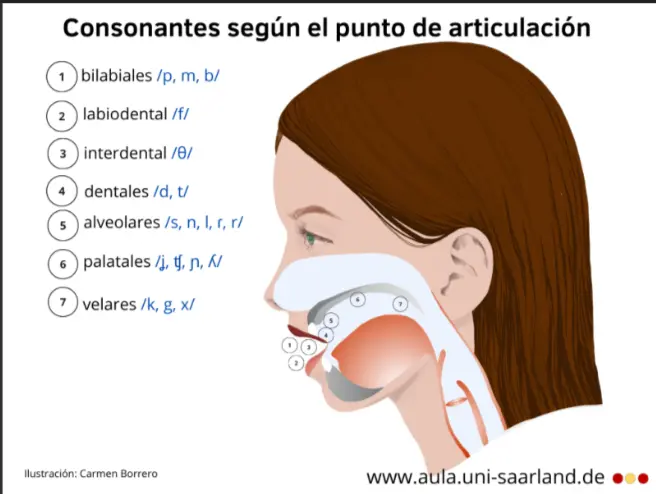Welcome to “The Sound Journey”!
Discover the fascinating world of English pronunciation.
Here, you’ll explore phonetics and phonology through fun explanations, colorful images, and helpful examples. Get ready to learn how sounds are made—and how to pronounce them like a pro!

Phonetics is the branch of linguistics that studies speech sounds from a physical and articulatory perspective. It focuses on how sounds are produced, transmitted, and perceived.
What is phonology?
Phonology studies the sound system of a language and its function within the language. It focuses on how sounds are mentally organized and how they change depending on the context.
Places of Articulation
Places of articulation are the points in the vocal tract where the articulating organs come together or make contact to produce a sound. Some of the main ones are:
• Bilabial: both lips (e.g., /p/, /b/)
• Labiodental: lower lip and upper teeth (e.g., /f/, /v/)
• Dental: tongue against the teeth (e.g., /θ/ as in think)
• Alveolar: tongue against the alveoli (e.g., /t/, /d/, /s/, /z/)
• Palatal: tongue against the roof of the mouth (e.g., /ʃ/ as in she)
• Velar: back of the tongue against the soft palate (e.g., /k/, /g/)
Articulators involved in sound production
Articulators are the vocal tract organs involved in sound production. They are divided into:
• Active: they move to produce sounds. Examples:
- Tongue
- Lips
- Soft palate (uvula)
- Lower jaw
• Passive: they remain fixed during articulation. Examples:
- Teeth
- Alveoli
- Hard palate
(articulation points)
Imagen de puntos de articulación

What is a content word?
Content words are those that convey the main meaning of a sentence. They include nouns, verbs, adjectives, and adverbs and are essential to understanding the central idea of the message.
Examples:
- book/libro (sustantivo)
- run/correr (verbo)
What is a function word?
Function words are those that connect content words and structure the sentence, but don't have much meaning on their own. They include articles, prepositions, pronouns, conjunctions, and auxiliaries.
Examples:
- the/el,la,los (artículo)
- and/ y (conjunción)
What is falling intonation?
Falling intonation occurs when the voice drops at the end of a sentence. It is commonly used in affirmative and negative sentences, and in "wh-" questions (what, where, when, etc.).
Examples:
- She is a teacher. (ells es profesora)
- Where are you going? (¿a donde vas?)
What is rising intonation?
Rising intonation occurs when the voice rises at the end of a sentence. It's common in yes/no questions and to express surprise or uncertainty.
example:
- Are you ready? (¿estás listo?)
- Do you like pizza? (¿te gusta la pizza?)
(IPA)
To learn more about sounds and articulation, you can look at the following alphabet;
International Phonetic Alphabet (IPA)
